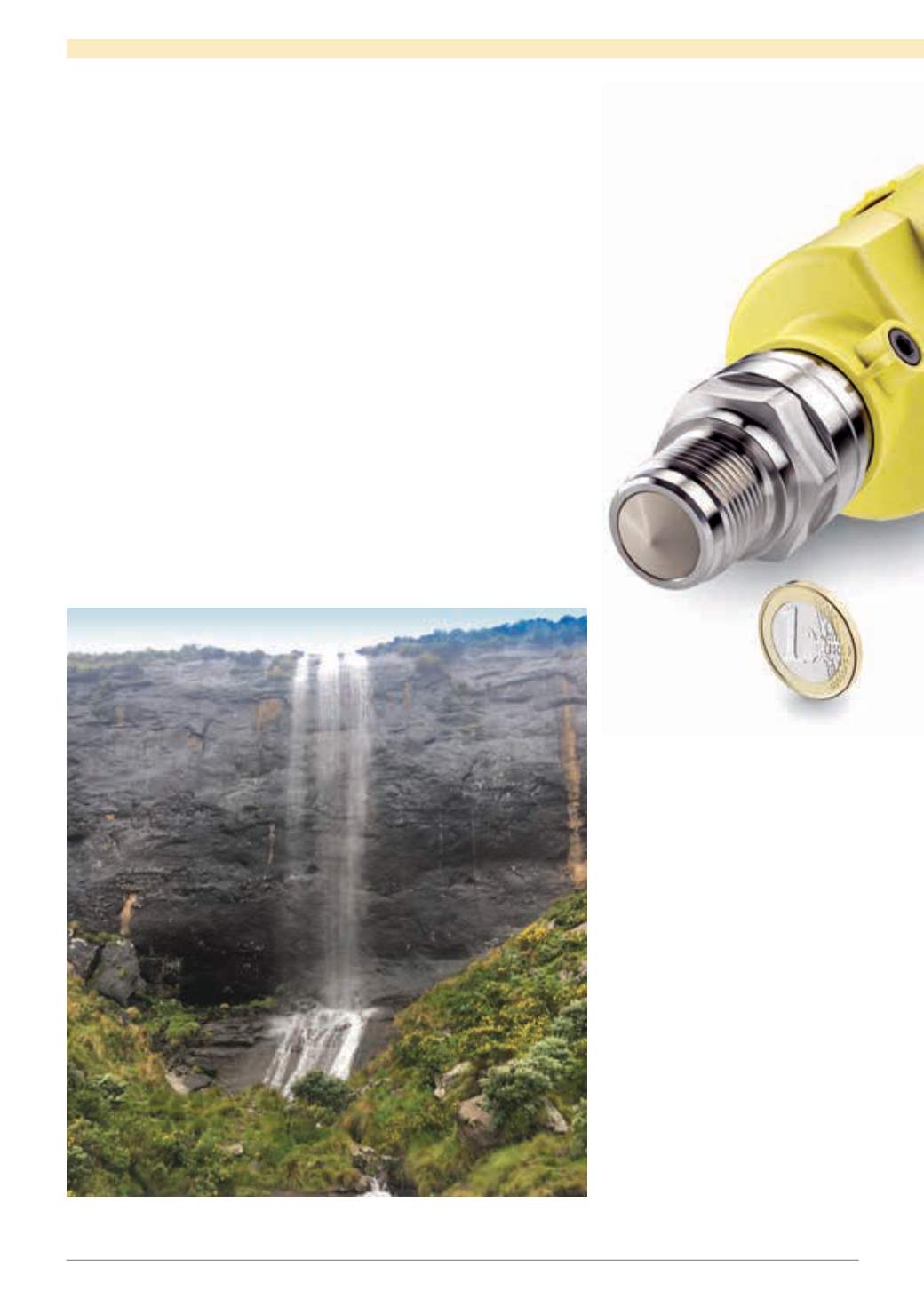

4
¦
MechChem Africa
•
April 2017
T
he dense media separation (DMS)
process is a special flotation process
in diamond ore processing. Dust
and dirt are, among other things,
the major factors that adversely affect level
measurement in the flotation tank.
The Maluti Mountains in the Kingdom
of Lesotho is home to the highest diamond
mine in the world at 3 200 metres above sea
level. The environmental conditions there are
correspondingly rough, with frequent, abun-
dant snowfalls, temperatures that fluctuate
between -18 °C and +20 °C and strong winds
thatintensifythelowtemperaturesbeingpart
of everyday life.
The conditions in the ore preparation
process are also pretty rough. The mine
transports the ore to the surface through two
kimberlite pipes. These are vertical chimneys
of volcanic origin that extend deep into the
The diamond in level measurement
The Maluti Mountains in the Kingdom of Lesotho is home to the highest diamond mine in the world at
3 200 metres above sea level.
Reliable level measurement under extremely harsh conditions is now possible thanks to VEGApuls 64 radar level sensors. This
article highlights the exciting example of the instrument’s use in diamond ore processing and the advantages one operator
was able to gain by switching to radar level measurement at 80 GHz.
earth’s crust. The source rock is crushed and
further processed to extract diamonds. This
whole procedure is extremely laborious.
Worldwide production of natural diamonds
is now about 20 t per year but covers only
about 23% of industrial demand. The rest is
manufactured industrially.
The two pipes in the Lesothomine contain
only a very small proportion of diamonds.
Their yield is less than two carats per hundred
tonnes of rock. A huge effort is required to
get at these diamonds. In the mine, 70% of
which belongs to Gem-Diamonds and 30%
to the Lesotho government, 5.8-million
tonnes of ore are processed per year in two
plants. An additional 1.2-million tonnes are
mined and processed by a contractor at a
separate plant. The combined tonnage pro-
duces approximately100000 carats per year.
Approximately 18-million tonnes of rock that
The smallest antenna of the
VEGApuls 64 is no bigger
than a one-euro coin.
This makes the new
radar sensor ideal
for installation in
small wells and
containers.
cannot be used
foranythingareleftover
each year.
Separating diamonds
from kimberlite
In a DMS plant, ferrosilicon – an alloy of iron
and silicon – in powdered form is suspended
in water to obtain a fluid with the same
density of diamond, about 3.52 g/cm³. To this
is added the previously crushed diamond
bearing material, in order to separate the
heavier minerals from the lighter rock. The
DMS process produces a concentrate, which
generally amounts to less than one percent
of the original material fed into the plant at
the beginning of the process. An alternative
processing method is centrifugation, where
the densermaterial is swirled at lowand high
speeds in cyclones. In the process, the dia-
monds and other denseminerals are pressed
to the walls and then out the bottom of the
cyclone. The wastewater rises at the centre
of the cyclone and is suckedout and screened
to remove the remaining particles.
Both methods have their advantages and
disadvantages. The investment costs for a
DMS plant are ten times higher than for a
cyclone. The DMS plant, however, provides
better yields. The water consumption and
operating costs for a DMS plant are also
significantly higher than is the case with
centrifuge processing.
However, the service life of kimberlite
mining facilities is very long, which makes it
















